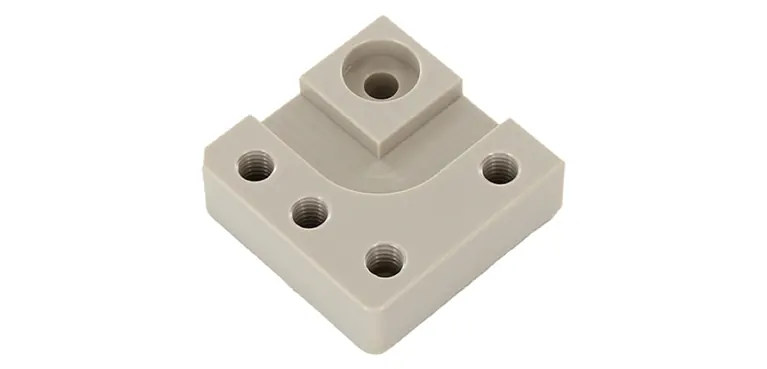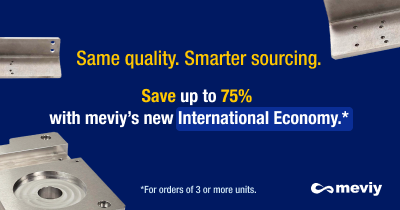BLOG » What is PEEK Resin? Material Overview and Design Considerations
What is PEEK Resin? Material Overview and Design Considerations
Often overshadowed by its more mainstream counterparts, PEEK resin stands as a pinnacle of engineering plastics. Known for its exceptional heat resistance, mechanical properties, chemical resistance, and electrical characteristics, PEEK resin holds a paramount position in various applications. Unlike general-purpose plastics like polyethylene or other transparent resins, PEEK resin isn’t widely available in the market, yet it plays a pivotal role in sustaining our everyday lives. In this article, we delve into the overview, types, characteristics and the core design considerations to take during the projecting phase.

What is PEEK Resin?
PEEK (Polyether Ether Ketone) resin is an engineering plastic, classified under the group of thermoplastic resins in the PAEK (Polyaryletherketone) family. PEEK resin boasts a continuous use temperature of up to 260°C, making it excel in heat resistance, chemical resistance, hydrolysis resistance, flame retardancy, mechanical properties, and electrical characteristics.
PEEK Resin Grades
PEEK resin comes in different grades with distinct formulations and properties. Here’s a breakdown of the key grades:
- 1. Basic Grade: Commonly referred to as “PEEK,” this grade offers superior heat and chemical resistance typical of super engineering plastics.
- 2. Reinforced Grade: These grades are reinforced with fibers to enhance mechanical strength. Variants include glass fiber-reinforced and carbon fiber-reinforced grades, which exhibit significantly improved strength and modulus compared to the basic grade.
- 3. Bearing Grade: Formulated by adding carbon fibers, graphite, and polytetrafluoroethylene (PTFE) in small proportions to enhance friction and wear resistance, making them ideal for applications like gears and bearings.
- 4. Conductive Grade: These grades are modified with carbon fibers to improve electrical conductivity, catering to applications that require static dissipation or electronic components susceptible to electrostatic discharge.
These are just a few examples of the diverse range of PEEK resin grades available, each tailored to meet specific application requirements.
Advantages of PEEK Resin
PEEK resin boasts numerous advantages that set it apart as a high-performance engineering plastic. Here are some of its key benefits:
Exceptional Heat Resistance: With a continuous use temperature of approximately 260°C, PEEK resin surpasses most super engineering plastics, making it ideal for applications requiring elevated temperature performance. Its high melting point of 334°C enables it to withstand extreme heat, and it exhibits resistance to hot water and steam, making it suitable for autoclaving.
Outstanding Mechanical Properties: Even under high-temperature conditions, PEEK resin maintains excellent mechanical properties, including high tensile strength, impact resistance, creep resistance, and wear resistance. Moreover, by incorporating additives such as glass or carbon fibers, its strength can be further enhanced.
Superior Chemical Resistance: PEEK resin demonstrates exceptional resistance to a wide range of chemicals, except for concentrated sulfuric acid. It remains stable when exposed to most acids, alkalis, and organic solvents, making it suitable for applications in aggressive chemical environments.
Food Safety Compliance: PEEK resin meets the standards set by regulations such as Japan’s Food Sanitation Act and the U.S. FDA, ensuring its safety for use in food-related applications. Consequently, PEEK components are commonly found in food processing equipment.
Ease of Processing: Unlike other PAEK resins, PEEK resin has a lower processing temperature (around 380-400°C), making it easier to mold. This favorable processing window contributes to its widespread use in various manufacturing processes.
Disadvantages of PEEK Resin
While PEEK resin offers numerous advantages, it is essential to consider its drawbacks:
High Cost: As of October 2022, PEEK resin is priced at approximately ¥10,000 per kilogram, making it significantly more expensive than other engineering plastics. Despite its high performance, the steep cost may deter some applications. However, advancements in manufacturing technology may help reduce production costs in the future.
Difficulty in Machining: Due to its exceptional strength, PEEK resin presents challenges during machining operations such as cutting and milling. Its high strength increases the likelihood of cracking or chipping during machining, and cutting tools may wear out more quickly. Careful attention must be paid when machining PEEK resin to avoid such issues.
PEEK Resin: Design Considerations
When designing custom parts with PEEK resin, it’s essential to consider several key factors to optimize performance and functionality.
Mechanical Design:
Incorporate geometric features that capitalize on PEEK’s exceptional mechanical properties, such as high tensile strength and toughness. Minimize stress concentrations by avoiding sharp corners or abrupt changes in geometry that could lead to premature failure under load. Utilize fillets and radii to distribute stress more evenly throughout the part, enhancing its overall durability and longevity.
Material Efficiency:
Given PEEK’s relatively high cost, prioritize material efficiency to minimize waste and reduce manufacturing costs. Optimize part geometries to minimize excess material and utilize nesting strategies during CNC machining or additive manufacturing processes to maximize material utilization. Designing parts with minimal support structures and considering the recyclability of scrap material can further enhance material efficiency.
Machinability Considerations:
PEEK’s toughness and abrasiveness can pose challenges during machining processes. When designing parts, consider tool selection, cutting parameters, and toolpath optimization to minimize tool wear and achieve precise dimensional accuracy. Use carbide or diamond-coated cutting tools specifically designed for machining PEEK to ensure efficient material removal and maintain tool longevity.
Environmental and Chemical Exposure:
Evaluate the operating environment and potential exposure to chemicals, heat, and moisture when designing PEEK parts. Ensure that the material’s excellent chemical resistance and high-temperature performance align with the application requirements. Consider factors such as UV stability, corrosion resistance, and thermal expansion coefficients to guarantee long-term reliability and performance in harsh operating conditions.
Conclusions
PEEK resin stands out as an engineering plastic with superior heat resistance, chemical resistance, resistance to hot water, flame retardancy, mechanical properties, and electrical properties compared to other resins. Known for delivering top-tier performance among thermoplastic resins, it offers a well-balanced combination of various properties. Alongside its balanced properties, benefits such as food safety compliance and ease of processing contribute to its appeal. However, it’s important to consider drawbacks such as high cost and challenges in machining, particularly with cutting tools. Despite these considerations, PEEK resin finds widespread applications across diverse industries including aerospace, automotive, medical devices, and 3D printing, continuing to support our lives behind the scenes.
At meviy, we offer PEEK resin machining services. Get started with a free 1-minute quote today!
 Deutsch
Deutsch Français
Français Español
Español Italiano
Italiano Polski
Polski